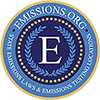Last updated on November 20th, 2017
Pennsylvania Car Insurance – The state of Pennsylvania requires vehicle owners to purchase two types of car insurance in order to legally driver their vehicle on a public road. These two types of insurance are liability insurance, which is required by almost every state, and medical benefits coverage, also known as personal injury protection or first party coverage. Liability coverage and medical benefits coverage may function in much the same way and cover the same type of cost but they differ in who they provide financial relief to. Liability coverage protects a policy holder from claims made against them and will typically pay up to a certain amount for injuries or property damage suffered by drivers other than the policy holder. By its very definition liability coverage requires that the fault or an accident be placed on one driver or another. All drivers involved in an accident may have liability coverage but it is only the insurance company of the driver that is at fault that will have to pay for injuries and damages. If a Pennsylvania resident were to only carry liability coverage, a common situation in many states, if they were involved in an accident that was considered to be their fault their policy would cover the injuries and damages to others but not the injuries or property damage incurred by them or the passengers in the insured vehicle. In order to ensure that each resident is able to financially afford medical attention should they need it after a car accident the state of Pennsylvania requires residents to purchase medical benefits coverage with each auto insurance policy. Unlike liability coverage, medical benefits coverage will pay out to the policy holder and any passengers in the insured vehicle regardless of which driver was at fault in an accident.
In the state of Pennsylvania just carrying liability and medical benefits coverage isn’t enough to satisfy state car insurance requirements; each type of coverage must also be carried in a certain amount. The minimum amount of medical benefits required by Pennsylvania auto insurance law for example is $5,000 and in most cases a car insurance company in Pennsylvania will not add medical benefits coverage to a car insurance policy in any amount under $5,000. Liability coverage on the other hand is a bit more complex since it is broke down into three different types of coverage, each of which functions differently. The first type is bodily injury liability coverage for a single person, the minimum required amount of which is $15,000. Bodily injury coverage for a single person is the maximum amount that the insurance company will pay for injuries sustained by a second party in an accident caused by the policy holder. The next is bodily injury coverage per accident, with minimum limits set at $30,000 per insured vehicle. This is the total amount that the insurance company will pay for all accident related injuries sustained by secondary parties. The third type of liability coverage required by the state of Pennsylvania is property damage coverage, $5,000 of which is required in order for a policy to meet state standards. Pennsylvania drivers almost always have the option to purchase more coverage than the state requires so that they can reduce the chance that they will have to cover any costs of an accident not covered by their insurance company.
In an effort to reduce the amount of lawsuits stemming from car accidents in the state of Pennsylvania, as well an attempt to reduce car insurance premiums, Pennsylvania allows residents to choose whether or not they want full tort coverage. Resident that choose full tort coverage will any anywhere from 10%-20% more in insurance premiums every year but they also completely preserve their legal rights if they are involved in an accident. Residents that choose limited tort coverage will receive a significant discount in car insurance premiums but will also forfeit many of their rights, such as the right to file a law suit, if they are involved in an accident.
Unlike some states, which have systems that allow for direct communication between the DMV and insurance companies, Pennsylvania still requires driver to provide proof of insurance the old fashioned way with an insurance ID card. If a Pennsylvania resident is pulled over involved in an accident the law requires them to provide proof of insurance to the officer on the scene; failure to do so can result in a wide range of penalties. For first offenders the penalty for driving without insurance typically consists of a $300 fine and the suspension of the driver’s license and vehicle registration for up to three months. For a driver to have the suspensions lifted after the term is up an additional $100 in fines or reinstatement fees will have to be paid to the Pennsylvania Department of Motor Vehicles.
